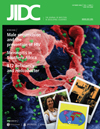Optimization of Human Cytomegalovirus LightCycler Real-Time PCR
DOI:
https://doi.org/10.3855/jidc.208Keywords:
CMV primers, real-time PCR, optimizationAbstract
Background: Real-time PCR has been widely considered as a powerful tool for the evaluation of Human Cytomegalovirus (CMV) DNA kinetics. Successful PCR relies on optimization, which is an extremely demanding procedure. Nevertheless, certain values could be optimal for most primers in use. Methodology: Seventeen CMV primer sets recommended in the literature were selected for optimization in terms of MgCl2 and primers concentrations as well as annealing temperature using the LightCycler instrument and SYBR Green I detection format. Optimal values were considered as those showing the lowest crossing point (Cp), the highest fluorescence intensity, the steepest sigmoid curve slope, and the absence of non-specific PCR products. Results: Optimal values for most studied primers were found to be 3 mM for MgCl2 concentration, 0.5 μM and 0.6 μM for primers concentration, and 55ºC for annealing temperature. Conclusion: Adopting the resulting values for CMV-specific primers generally used in single-target real-time PCR assays with the same thermal cycler may guarantee their efficient performance minimizing cost and time needed for optimization.Downloads
Published
2008-10-01
How to Cite
1.
Habbal W, Monem F, Gärtner BC (2008) Optimization of Human Cytomegalovirus LightCycler Real-Time PCR. J Infect Dev Ctries 2:406–410. doi: 10.3855/jidc.208
Issue
Section
Technical Notes
License
Authors who publish with this journal agree to the following terms:
- Authors retain copyright and grant the journal right of first publication with the work simultaneously licensed under a Creative Commons Attribution License that allows others to share the work with an acknowledgement of the work's authorship and initial publication in this journal.
- Authors are able to enter into separate, additional contractual arrangements for the non-exclusive distribution of the journal's published version of the work (e.g., post it to an institutional repository or publish it in a book), with an acknowledgement of its initial publication in this journal.
- Authors are permitted and encouraged to post their work online (e.g., in institutional repositories or on their website) prior to and during the submission process, as it can lead to productive exchanges, as well as earlier and greater citation of published work (See The Effect of Open Access).








